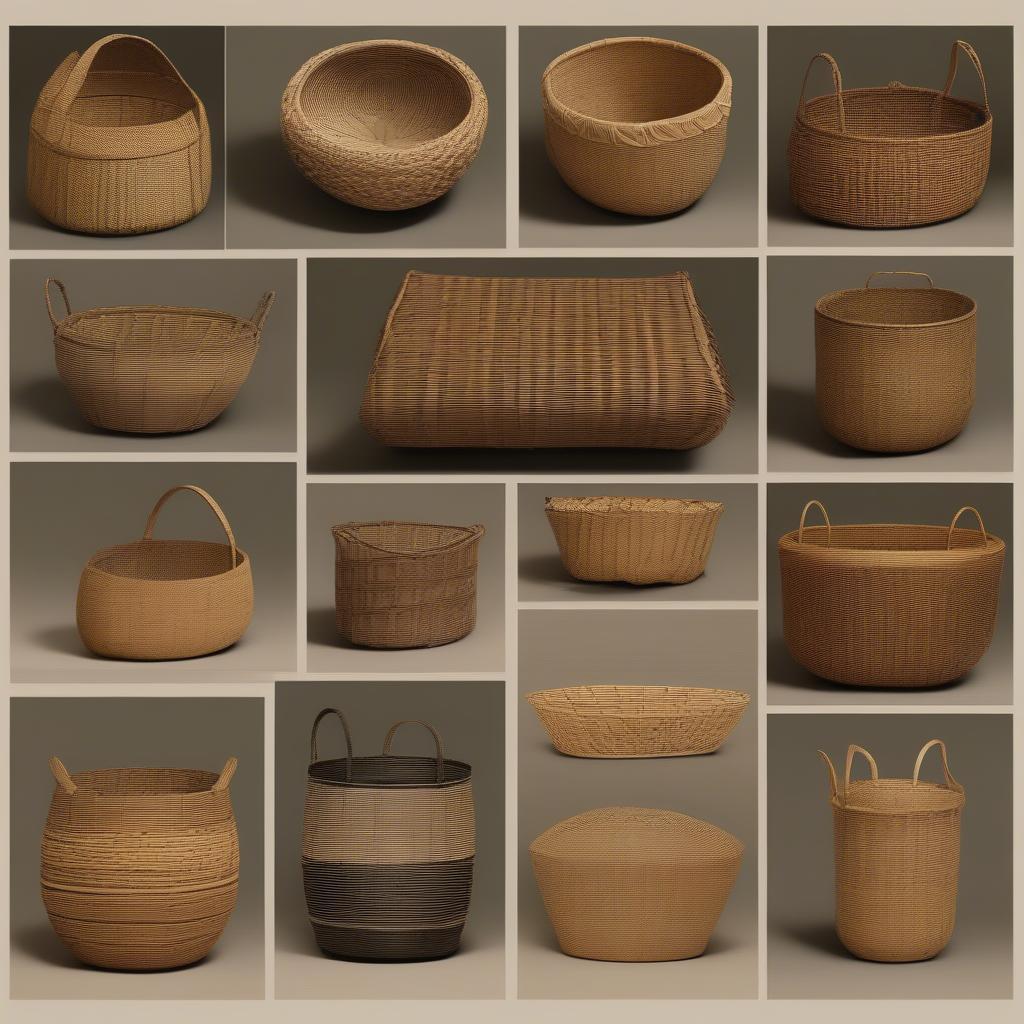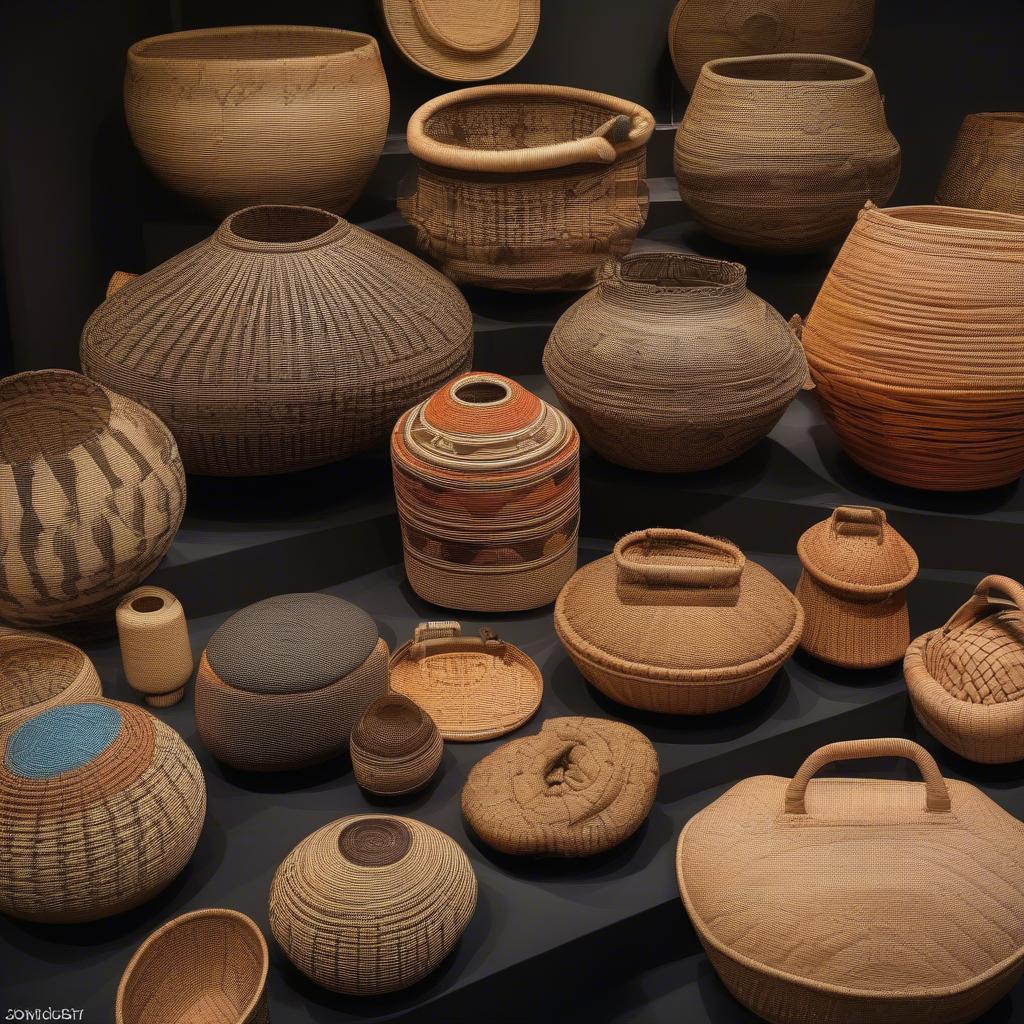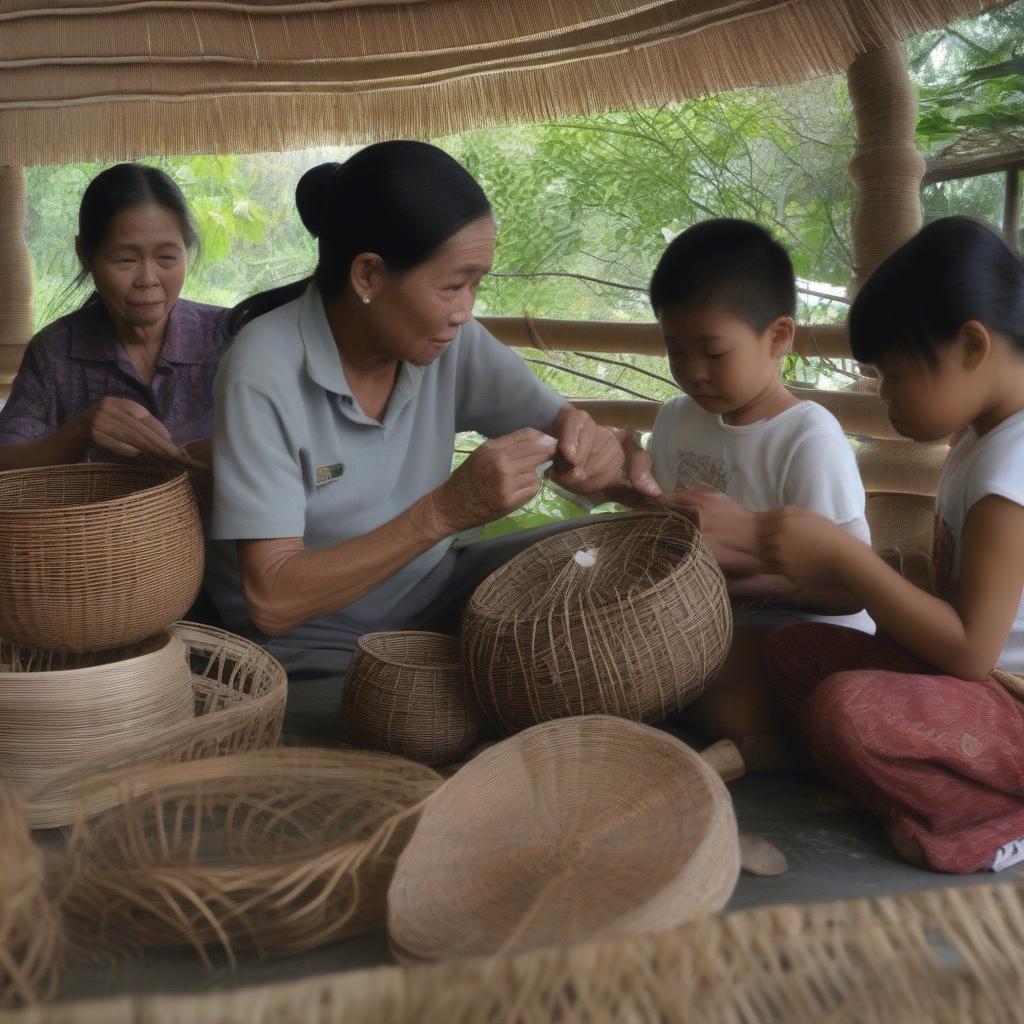Basket Weaving
Basket Weaving in the Philippines: Origin and Evolution
Basket weaving in the Philippines has a rich history, deeply intertwined with the country’s diverse cultures and natural resources. From practical uses to intricate artistry, Filipino basketry reflects a unique heritage passed down through generations. This article delves into the origins of basket weaving in the Philippines, exploring its evolution, regional variations, and enduring significance in contemporary society.
Unveiling the Ancient Roots of Philippine Basket Weaving
Archaeological findings suggest that basket weaving in the Philippines dates back centuries, even predating the arrival of Spanish colonizers. Early Filipinos, reliant on their natural environment, utilized readily available materials like bamboo, rattan, abaca, and pandan leaves to create baskets for various purposes, including storage, fishing, and transportation. These early baskets, while functional, also displayed an inherent artistic sensibility, laying the foundation for the more elaborate traditions that would develop later.
 Ancient Filipino Baskets Woven from Natural Materials
Ancient Filipino Baskets Woven from Natural Materials
Regional Variations: A Tapestry of Techniques and Styles
The diverse geography and cultural landscape of the Philippines have given rise to distinct regional variations in basket weaving. Each region boasts its own unique techniques, materials, and aesthetic preferences. For example, the Cordillera region is known for its tightly woven baskets adorned with intricate patterns, while the southern islands are renowned for their colorful and elaborate designs often incorporating shells and beads. These regional variations showcase the creativity and adaptability of Filipino basket weavers, who have skillfully adapted their craft to suit local resources and cultural traditions.
From Utilitarian Objects to Works of Art: The Evolution of Basketry
Over time, Filipino basket weaving has evolved beyond its purely utilitarian origins. While baskets continue to serve practical purposes in everyday life, they have also become recognized as genuine works of art. Skilled artisans now create intricate and aesthetically stunning baskets, often incorporating complex patterns and innovative designs. These baskets are prized not only for their beauty but also as cultural symbols, representing the rich heritage and artistic traditions of the Philippines.
 Intricate Filipino Basketry Designs
Intricate Filipino Basketry Designs
Basket Weaving in the Philippines Today: Preserving Tradition and Embracing Innovation
Basket Weaving In The Philippines Origin continues to thrive in the 21st century, with artisans balancing the preservation of traditional techniques with contemporary innovations. Many weavers are experimenting with new materials and designs, pushing the boundaries of the craft while remaining deeply rooted in their cultural heritage. This blend of tradition and innovation ensures that Filipino basket weaving remains a vibrant and evolving art form.
The Cultural Significance of Basket Weaving in the Philippines
Basket weaving is not merely a craft in the Philippines; it is deeply ingrained in the cultural fabric of the nation. Baskets are often used in traditional ceremonies, festivals, and rituals, playing a vital role in community life. They are also exchanged as gifts, symbolizing respect, friendship, and cultural exchange. The enduring significance of basket weaving reflects its importance in maintaining cultural identity and passing down traditions from one generation to the next.
 Filipino Basket Weavers at Work
Filipino Basket Weavers at Work
Conclusion: A Legacy Woven in Time
Basket weaving in the Philippines origin story is a testament to the ingenuity, artistry, and cultural richness of the Filipino people. From its ancient roots to its contemporary expressions, this craft has played a vital role in shaping Filipino identity. By supporting Filipino basket weavers and appreciating their exquisite creations, we contribute to the preservation of a valuable cultural heritage.
FAQ
- What are the most common materials used in Filipino basket weaving?
- Which regions in the Philippines are known for their unique basket weaving styles?
- Where can I purchase authentic Filipino baskets?
- How can I learn more about the history of basket weaving in the Philippines?
- Are there any organizations dedicated to preserving and promoting Filipino basketry?
- What is the significance of basket weaving in Filipino culture?
- How are modern Filipino basket weavers incorporating innovation into their craft?
Related Articles You Might Enjoy
- Exploring the Art of Rattan Furniture Making in the Philippines
- Discover the Beauty of Handwoven Abaca Textiles
- The Indigenous Crafts of the Cordillera Region
Call us for support at Hotline: +84 388 951 999, or visit our offices in Hanoi, Vietnam, or Tech Avenue, Suite 12, San Francisco, CA 94105, USA. We have a 24/7 customer service team ready to assist you.
